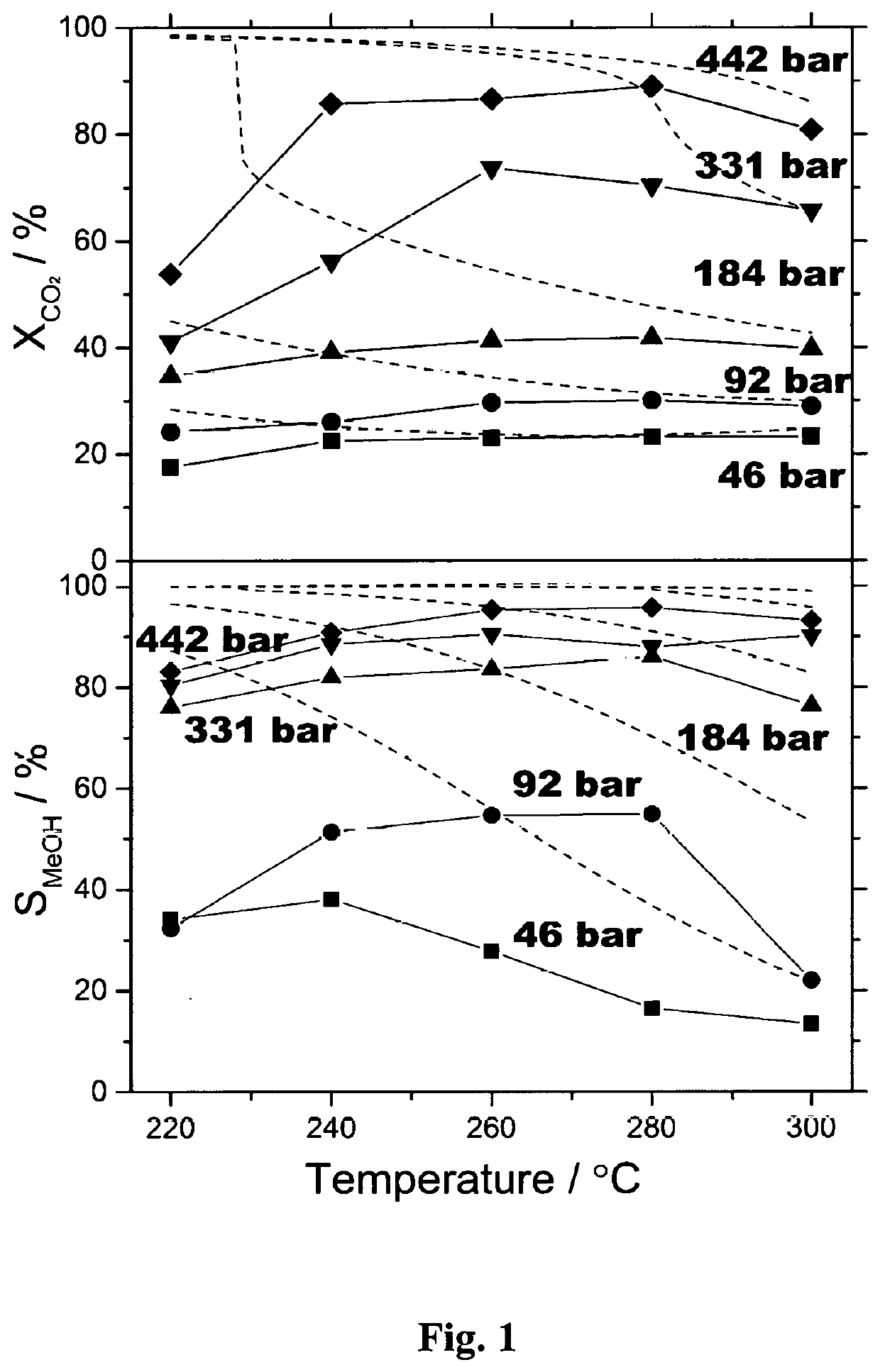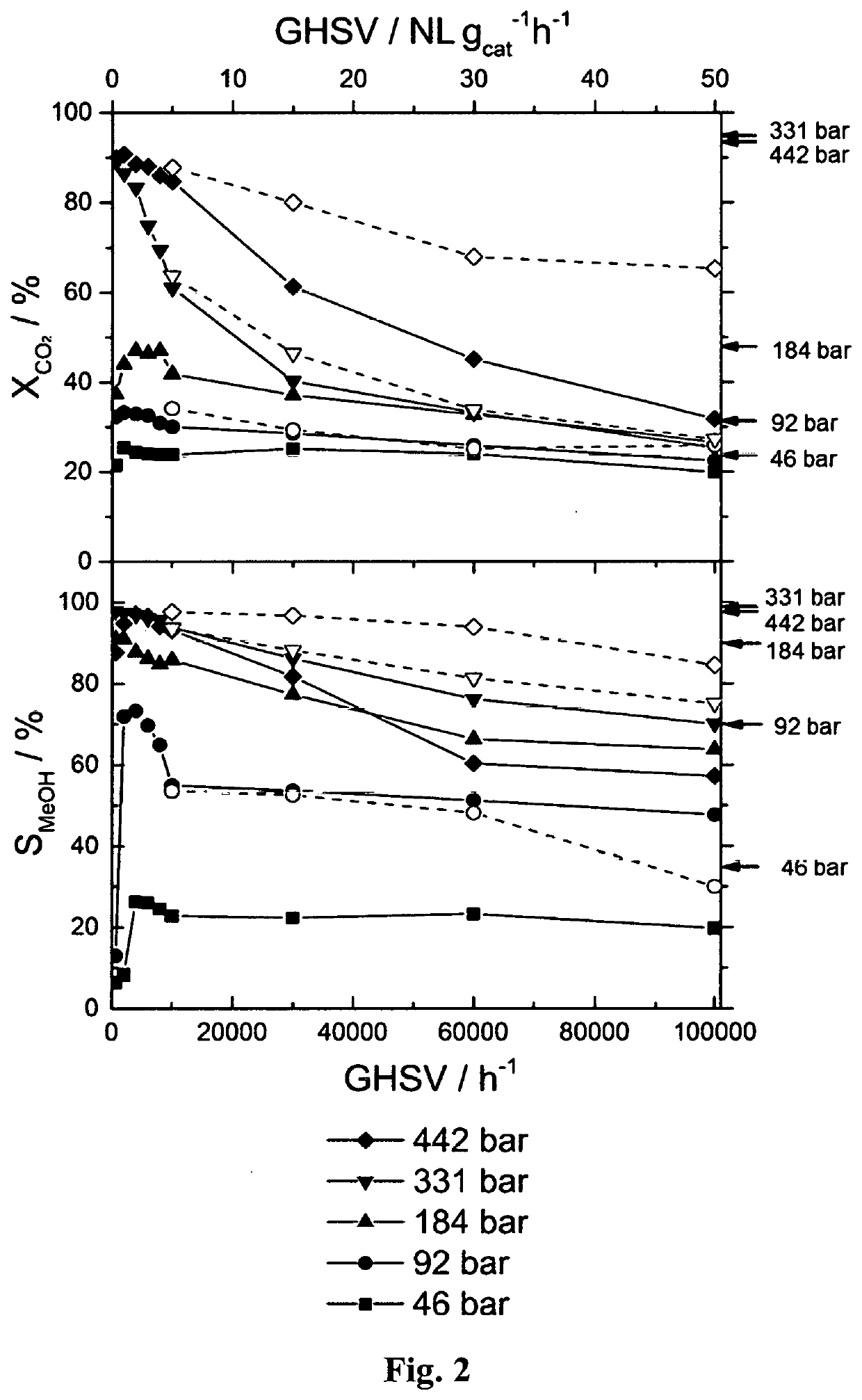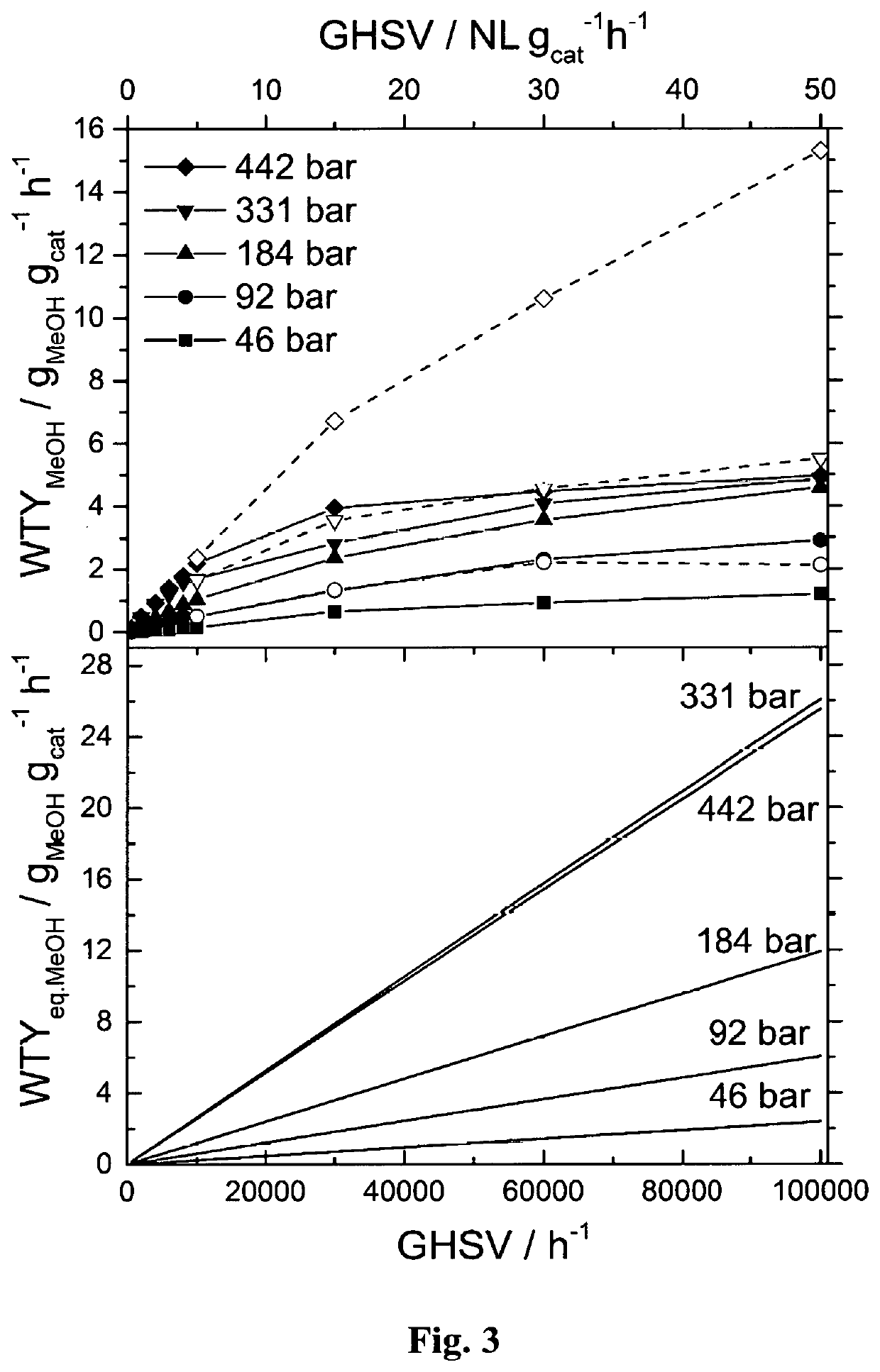Methanol production process
a methanol production and process technology, applied in the field of methanol production process, can solve the problems of reducing the use of rwgs
- Summary
- Abstract
- Description
- Claims
- Application Information
AI Technical Summary
Benefits of technology
Problems solved by technology
Method used
Image
Examples
example 1
Experimental Procedure
[0145]A continuous flow, high-pressure fixed-bed reactor was used to study the hydrogenation of CO2 to methanol. The reactor made of stainless steel was in a tubular shape with outer diameter of ⅛″ or ¼″ with inner diameter of 0.07″ or 0.12″, respectively. The details of high-pressure fixed-bed reactor and analytical systems are described in A. Bansode, B. Tidona, P. R. von Rohr, A. Urakawa, Catal. Sci. Technol., 3 (2013) 767-778. The reactant gas mixture (molar ratio of CO2:H2:Ar=23:69:8) was purchased from Abelló Linde (Spain). A commercial methanol synthesis catalyst (Cu / ZnO / Al2O3, Product No.: 45776) was purchased from Alfa Aesar. The catalyst pellet was crushed, sieved to particle size of 100-300 μm, and charged to the reactor with approximate catalytic bed length of 20-100 mm depending on the amount of catalyst defined by the desired reaction conditions. Prior to the reaction, the catalyst was reduced in hydrogen stream (molar ratio of H2:Ar=90:10) at 20 ...
PUM
| Property | Measurement | Unit |
|---|---|---|
| Temperature | aaaaa | aaaaa |
| Temperature | aaaaa | aaaaa |
| Temperature | aaaaa | aaaaa |
Abstract
Description
Claims
Application Information
 Login to View More
Login to View More - R&D
- Intellectual Property
- Life Sciences
- Materials
- Tech Scout
- Unparalleled Data Quality
- Higher Quality Content
- 60% Fewer Hallucinations
Browse by: Latest US Patents, China's latest patents, Technical Efficacy Thesaurus, Application Domain, Technology Topic, Popular Technical Reports.
© 2025 PatSnap. All rights reserved.Legal|Privacy policy|Modern Slavery Act Transparency Statement|Sitemap|About US| Contact US: help@patsnap.com



